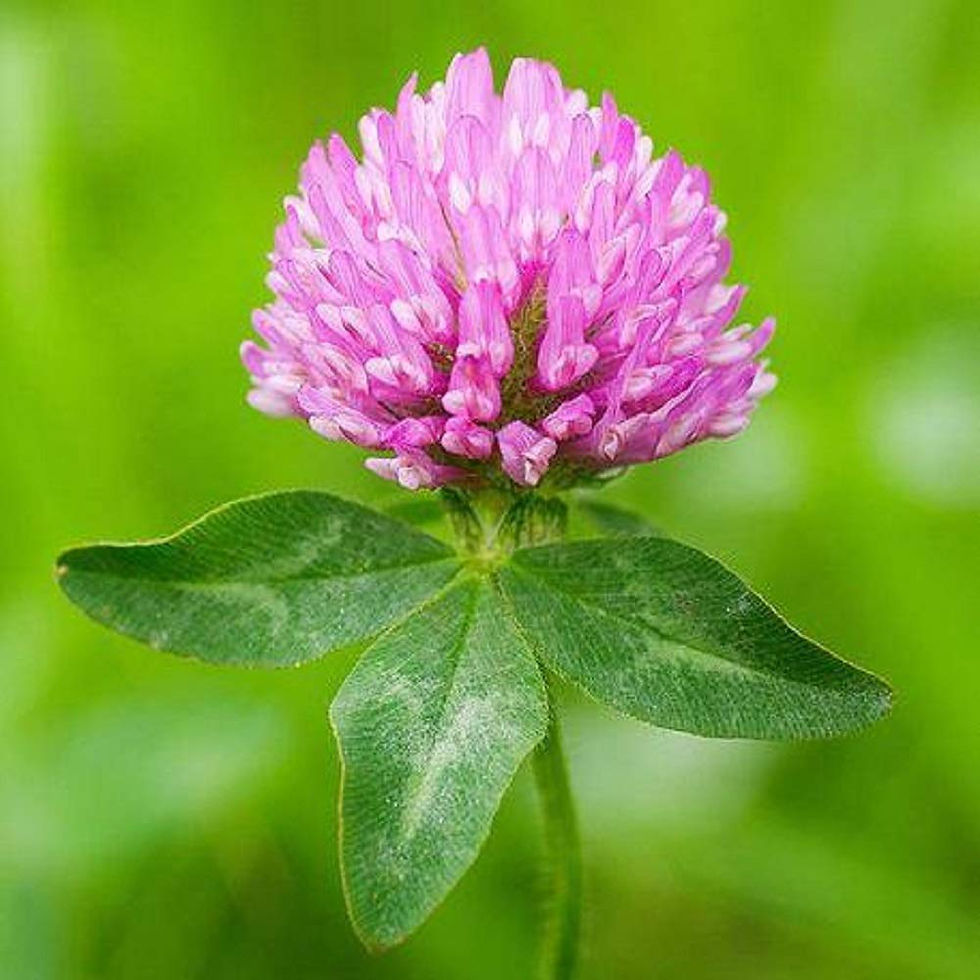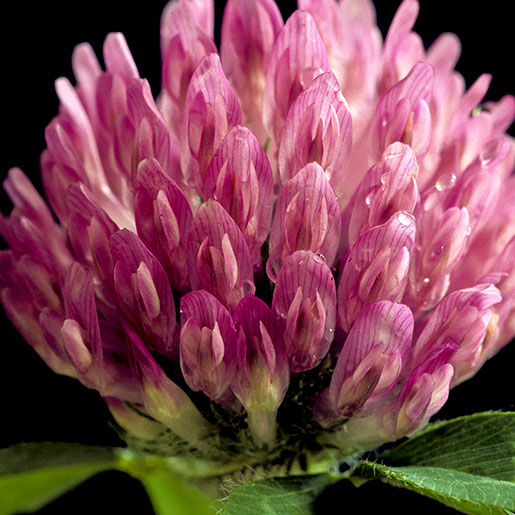Discovering the Wonders of Red Clover
- kaylah crane
- Jul 28
- 4 min read
Red Clover (Trifolium pratense), is not just a pretty wildflower that grows in our fields and gardens; it has a rich history of medicinal use. Its beautiful pink-purple flowers and three interlocking leaves make it easily recognizable. This blog post delves into the extensive Materia Medica surrounding Red Clover, exploring its medical uses, plant parts utilized, and historical applications by Native Americans.
The Botanical Profile of Red Clover
Red Clover belongs to the Fabaceae family. It's a perennial plant mainly found in Europe, Asia, and North America. The plant reaches up to 30 cm in height and thrives in various soils, preferring sunny or partially shaded areas. The flowers bloom in late spring to early summer, adorned with a sweet scent that attracts bees. Red clover leaves are characterized by three connecting leaflets
Each leaflet is oval in shape and has a toothed margin, with a dark green faded V-shape in the center. The stems are upright, hollow and hairy. The flowers are formed of pink-purple pea shaped florets clustered together into a dome like shape. Color varies depending of variety and climate conditions.

Medical Uses of Red Clover
Throughout history, Red Clover has been associated with various medical applications. Traditionally, it has been used as a natural remedy for several ailments. Here are some of its prominent uses:
Hormonal Balance
One of the most well-known features of Red Clover is its high content of phytoestrogens. These plant compounds mimic estrogen in the body and can be beneficial for women experiencing menopausal symptoms. Studies suggest that Red Clover extracts may help alleviate hot flashes, night sweats, and mood swings.
Cardiovascular Health
Red Clover is also celebrated for its potential benefits in supporting heart health. It contains isoflavones, which may help improve circulation, lower cholesterol levels, and reduce the risk of heart disease. Regular consumption of Red Clover could assist in maintaining optimal cardiovascular function.
Skin Health
The anti-inflammatory properties of Red Clover make it a popular choice for treating skin conditions such as eczema and psoriasis. Applying Red Clover tinctures or ointments directly to the skin may help relieve redness and irritation.
Respiratory Relief
In folk medicine, Red Clover has been used as a remedy for respiratory issues, including coughs and bronchitis. A warm infusion of Red Clover flowers is often consumed to soothe throat discomfort and clear congestion.
Plant Parts Used
Various parts of the Red Clover plant are used in herbal remedies:
Flowers: The flowers are primarily used for making teas, tinctures, and extracts. They are rich in nutrients and beneficial compounds.
Leaves: The leaves can be consumed fresh in salads or brewed as tea.
Roots: Though less commonly used, the roots possess various medicinal properties and can be utilized as a decoction.
Folk Remedies Surrounding Red Clover
Throughout history, numerous folk remedies have been associated with the use of Red Clover. Here are some notable examples:
Traditional Teas
In folk medicine, a soothing tea made from Red Clover is often used to promote relaxation and support digestive health. To prepare, steep fresh or dried flowers in hot water for about 10 minutes, strain, and enjoy.
Poultices
A poultice made from crushed Red Clover flowers is applied to wounds or bruises to promote healing and reduce inflammation. This topical application has been a traditional practice to relieve minor skin irritations.
Detoxification
Red Clover is often touted for its detoxifying properties. Infusions prepared from the flowers may assist in purifying the blood and promoting overall wellness. Drinking this tea regularly may offer a natural way to rid the body of excess toxins.

Native American Uses of Red Clover
Native American tribes have long recognized the medicinal benefits of Red Clover. Traditionally, they viewed it as a powerful herb with a variety of applications:
Fertility and Women's Health
Many Native tribes used Red Clover to help women with fertility issues. They believed that the phytoestrogens in the plant could support reproductive health and balance hormones.
Pain Relief
Red Clover was also used in poultices for pain relief. Applied to sore muscles or bruises, it provides a natural remedy. Additionally, they utilized the flowers in teas to alleviate menstrual discomfort.
Rituals and Ceremonies
Some Native American cultures incorporated Red Clover into rituals and ceremonies, recognizing its beauty and medicinal properties as gifts from the earth. The flowers often symbolized growth, renewal, and the cycle of life.
Important Considerations
While Red Clover is generally considered safe for most individuals, it’s essential to consult with a healthcare provider before starting any herbal regimen, especially for pregnant or breastfeeding women. Additionally, people with hormone-sensitive conditions should approach Red Clover with caution due to its estrogenic activity.
Dosing and Preparation
If you're interested in integrating Red Clover into your wellness routine, consider the following preparations:
Tea: Use 1-2 teaspoons of dried flowers per cup of hot water. Steep for 10-15 minutes.
Tincture: Follow the manufacturer's instructions for dosage, typically 1-2 mL, taken several times a day.
Capsules: Available in health food stores, follow dosage guidelines on the packaging.

The Future of Red Clover in Whole-istic Health
As interest in natural remedies and holistic health continues to grow, Red Clover's significance may expand further. Its rich history and medicinal benefits make it a fascinating topic of study for both herbalists and researchers.
Using Red Clover safely requires informed choices and respect for traditional knowledge. As more individuals look to nature for health solutions, the age-old wisdom surrounding plants like Red Clover becomes increasingly relevant.
In conclusion, Red Clover remains a captivating and beneficial plant with a proud place in the world of herbal medicine. From its historical applications in Native American cultures to its modern usage for hormonal balance and heart health, it embodies a connection between nature and wellness that continues to resonate today. If you want to explore this remarkable plant, consider incorporating it into your herbal diet and experience its potential benefits for yourself.



Comments